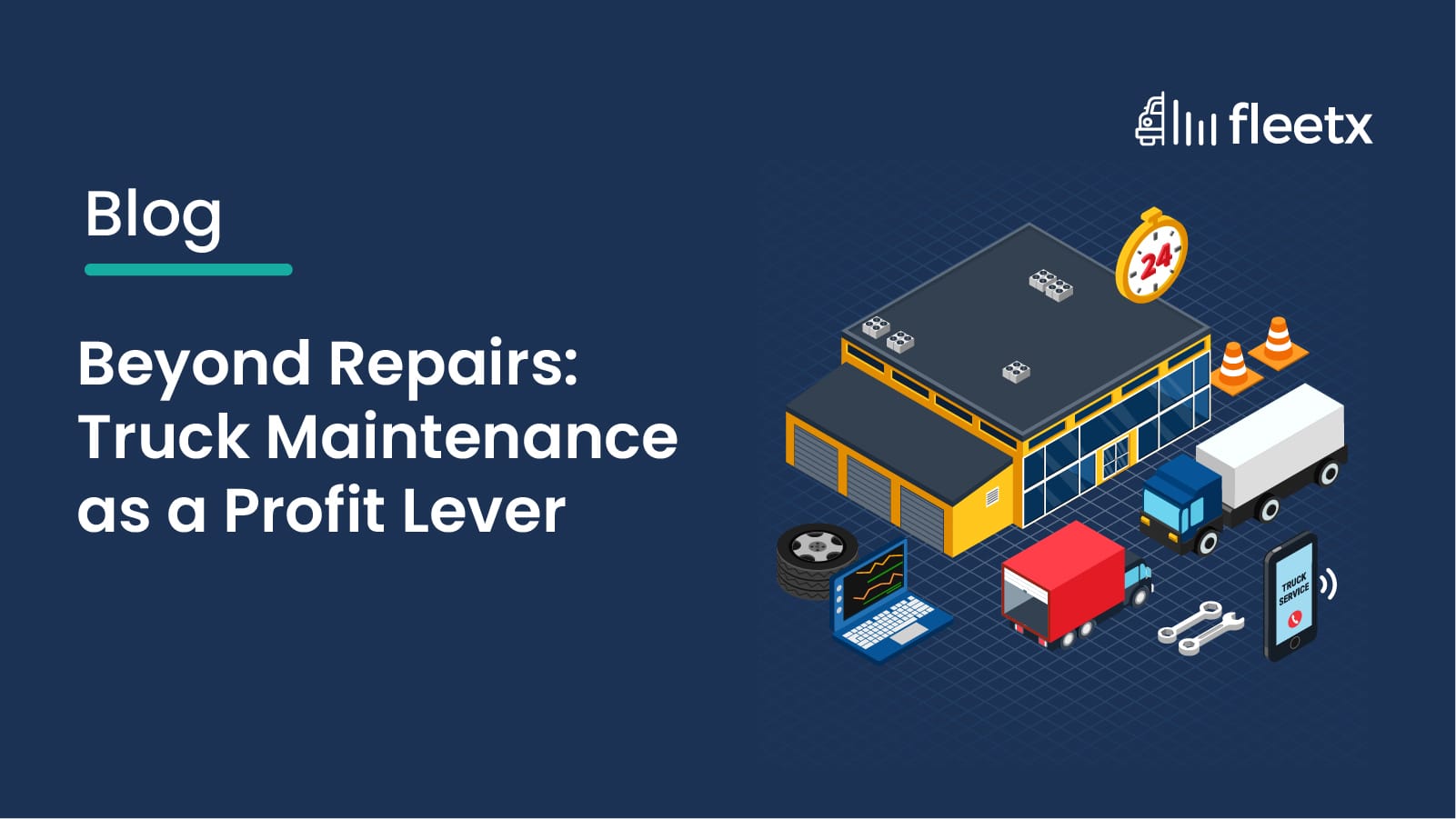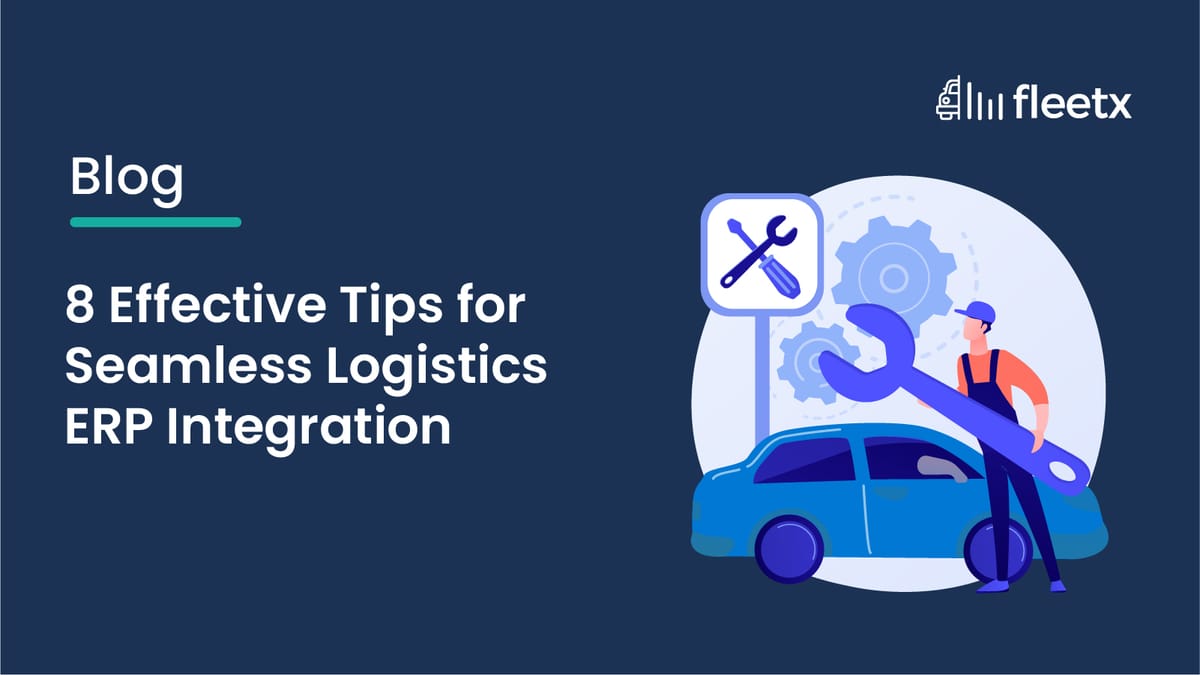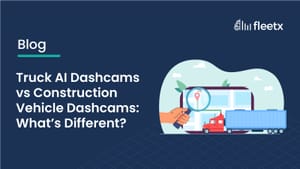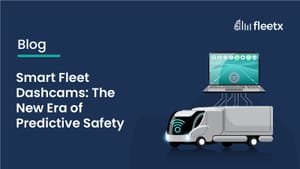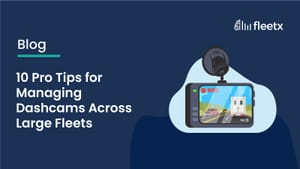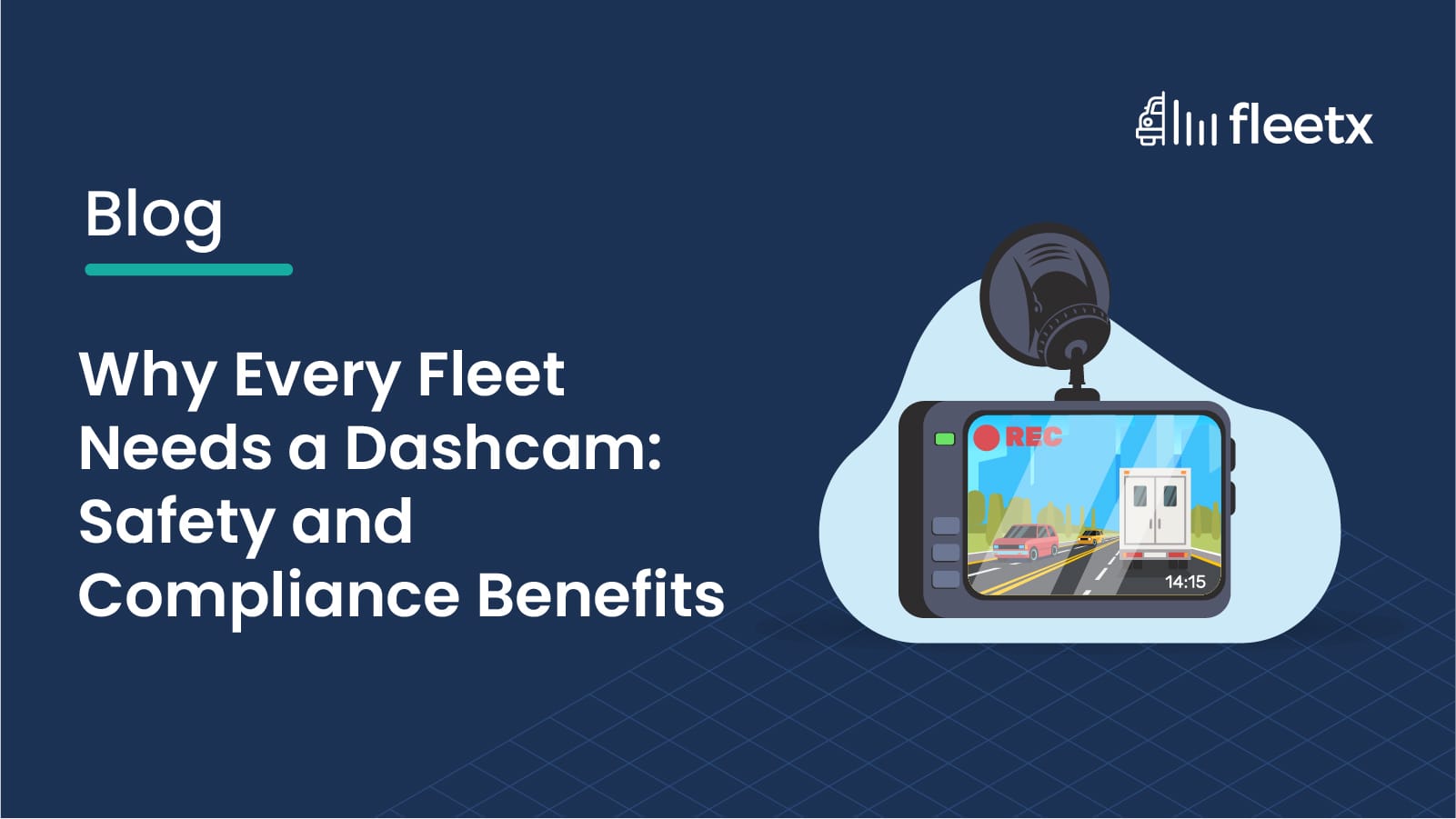
Tight margins, multiple operational risks, infrastructural shortcomings, and human behaviour often create unpredictable hazards for the Indian trucking sector. Every fleet needs tools that do more than just “track location”. Dashcams and smarter still, AI-powered dashcams/video telematics - offer safety, compliance, and cost-saving benefits that GPS alone cannot deliver. Dashcams are no longer optional for fleets wanting to stay competitive and avoid liabilities.
A Brief Account of the Impact of Accidents and Unsafe Driving Practices in India
- Total road accidents recorded in India in 2023 were 4,80,583
- 1,72,890 people died due to road accidents in 2023
- Costs to fleets are multi-fold: repairing damage, downtime, insurance premiums, legal fees, loss of reputation, and possible cargo loss/damage.
- Unsafe driving (harsh braking, speeding, fatigue) increases fuel consumption, accelerates wear & tear, and raises maintenance costs.
These are not hypothetical - every accident or unsafe event has cascading effects: delayed deliveries, client dissatisfaction, and insurance disputes.
Essential Features of AI Dashcams
What should fleet owners look for when evaluating dashcam options -
- Multiple Camera Angles: Front road view, in cabin (to monitor driver behaviour), rear or side views for blind spots.
- AI Capabilities: Overspeeding detection, harsh braking, fatigue/ drowsiness alerts, distracted driving (e.g., phone usage), lane departure, collision warnings, etc.
- Event-Triggered Recording: The system doesn’t just record endlessly—it intelligently captures footage during abnormal events such as sudden impacts or hard braking. By focusing only on critical moments, it makes incident analysis faster, clearer, and more meaningful.
- Night/Low-Light Performance: Clear video even in low visibility.
- Reliable Storage & Backup: Local loop recording and cloud upload, encryption, and tamper prevention.
- Real-Time Alerts and Telemetry: Instant notification to fleet managers for dangerous events.
- Integration with Other Systems: GPS, vehicle sensors, and telematics dashboards.
Functioning of Smart Dashcams
A brief look at how they work in practice to avoid road accidents:
- Continuous Monitoring and Buffering - The camera records and buffers video continuously (sometimes few seconds to minutes) so that when an event happens, the system also captures what happened.
- Sensor/Data Fusion - GPS data, accelerometer/gyroscope/vehicle’s CAN-bus signals feed into the system. If abrupt deceleration or over-G is detected, the dashcam identifies a “trigger event.”
- AI Model Detection - Computer vision inside the device (or edge/cloud) analyzes driver posture/eyes/phone usage/lane drift, etc. Some run in real time at the edge; others post-process.
- Event Capture and Alert Generation - Once thresholds are crossed, videos are flagged, saved (locally and/or uploaded), and alerts go to the driver (if applicable) and fleet managers.
- Analytical Review - Aggregated video and data enable fleet managers to identify trends, driver-specific risk scores, problem routes, or times of day, and design targeted interventions (such as training, scheduling, or route changes).
Safety and Compliance Benefits of Using AI-Powered Dashcams in Fleet Management
From a seasoned logistics operator’s point of view, here are the direct gains:
Move Beyond GPS
GPS is good, but it’s only half the story. Fleetx’s AI dashcam built for trucks fleet, demonstrates how video and analytics raise visibility to a new level.
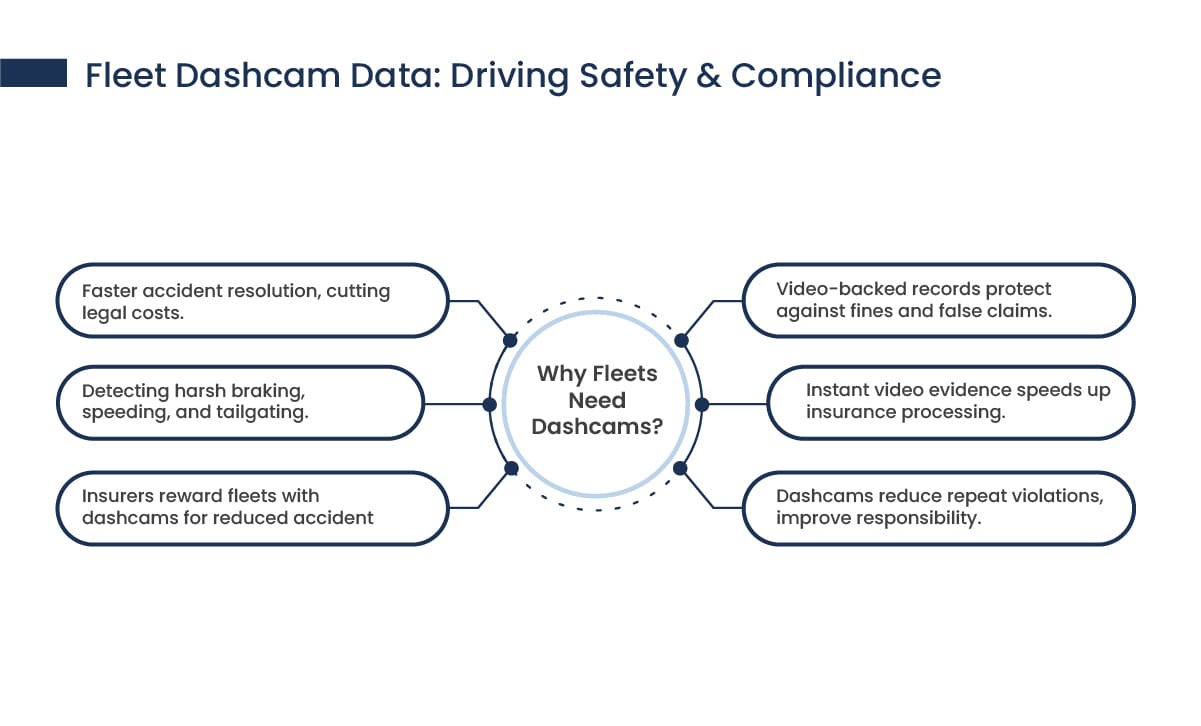
- You get multi-camera visibility (road + cabin + other angles) for full situational awareness.
- Real-time alerts about driver behaviour (overspeed, harsh braking, lane departure, fatigue, etc.) plus event-triggered video playback make it possible to intervene or train in near-real time.
- In case of accidents, collision reconstruction is possible: video evidence, the voice of the driver, sensor data, all helping you understand what actually happened. Fleet managers avoid ambiguous blame.
- Integration capabilities with other fleet management data: maintenance, routes, fuel, and regulatory compliance.
- Better compliance with Indian road safety regulations, insurance demands, and client safety expectations.
Truck Dashcam Use Case
Here are examples of Indian fleets using smart dashcams via Fleetx-engineered AI powered dashcam telematics:
Client A – Long Haul Operator
Before deployment, frequent accidents were reported on particular stretches due to overspeeding and fatigue at night. After installing dashcams that are enabled with in-cab fatigue alerts and driver coaching, accidents on that segment dropped by ~40-50%. Claims went down, and insurance disputes became easier to resolve.
Client B – Regional Transporter
Carried sensitive/insured goods. Use of video evidence in the incident reduced liability by capturing the damage caused by a third party rather than their driver, business reputation was maintained, and premiums stabilized.
Client C – Fleet with Young Drivers
Training and feedback using dashcam video footage (harsh braking, tailgating) helped bring driver-wise safety scores up. Fuel usage improved, and maintenance bills dropped (due to less brake wear and fewer shock damage incidents).
Client D – Cold Chain/Time Critical Deliveries
Delays from accidents or unplanned stoppages are costly. Video telematics, route‐based risk mapping allowed re-routing, scheduling rest stops, reducing fatigue, and improving delivery on time.
Driving Safety & Profitability Together
Indian fleets face high stakes: accidents cost far more than just repair bills. They cost lives, reputation, and long-term viability. AI-powered dashcams/video telematics aren’t about surveillance per se - they are tools for risk management, cost control, compliance, and even competitive advantage.
If you want a safer, more predictable, lower‐risk fleet operation, invest not just in GPS trackers, but in AI powered dashcams. Picture every journey as visible, accountable, and improvable. In logistics, that degree of visibility can make the difference between a fleet that survives and one that thrives.
Why should Indian fleets invest in AI-powered dashcams instead of relying only on GPS tracking?
GPS can tell you where a truck is, but it can’t explain what’s happening inside or around it. AI dashcams capture unsafe driving, fatigue, and accident details - helping fleets prevent incidents, cut costs, and resolve disputes faster.
How do AI dashcams improve driver safety and behaviour?
They provide real-time alerts for risky behaviour like overspeeding, harsh braking, or distracted driving. The video feedback and coaching tools help drivers correct habits, leading to fewer accidents, lower fuel consumption, and reduced wear & tear.
Can dashcam footage really lower insurance costs for fleets?
Yes. Video evidence settles claims quickly, often proving the fleet wasn’t at fault. This reduces false claims, stabilizes premiums, and in some cases, helps negotiate lower insurance rates with providers.
What features should fleet owners prioritize when choosing an AI dashcam system?
Key must-haves include: multiple camera angles (road + cabin + cargo), AI-powered alerts (fatigue, lane departure, collision warning), event-triggered recording, night vision, secure cloud storage, and integration with fleet management systems.

